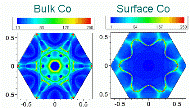Department of Physics and Astronomy: Publications and Other Research
Date of this Version
11-1-2000
Abstract
The dissociative electron attachment cross sections for the methyl halides vary in an enormous range from the virtually unmeasurable 10−23 cm2 for CH3Cl at room temperature to 10−14 cm2 for CH3I. In this paper we supplement our previous studies by calculations of dissociative electron attachment to CH3Br and compare results for all methyl halides studied so far. The rate as a function of temperature for CH3Cl and CH3Br exhibits an exponential dependence on 1/T (Arrhenius law) with the activation energy lower for CH3Br. CH3I does not obey the Arrhenius law since the crossing point of the neutral and anion potential curves occurs near the lowest vibrational levels. The cross section as a function of electron energy for all of the methyl halides studied here exhibits structure at the vibrational excitation thresholds that is associated with a vibrational Feshbach resonance like that observed recently in CH3I by Schramm et al (Schramm A, Fabrikant I I, Weber J M, Leber E, Ruf M-W and Hotop H 1999 J. Phys. B: At. Mol. Opt. Phys. 32 2153).


Comments
Published in Journal of Physics B: Atomic Molecular and Optical Physics 33 (2000), pp. 5479–5492. Copyright © 2000 Institute of Physics/IOP Publishing Ltd. Used by permission. http://www.iop.org/EJ/journal/JPhysB